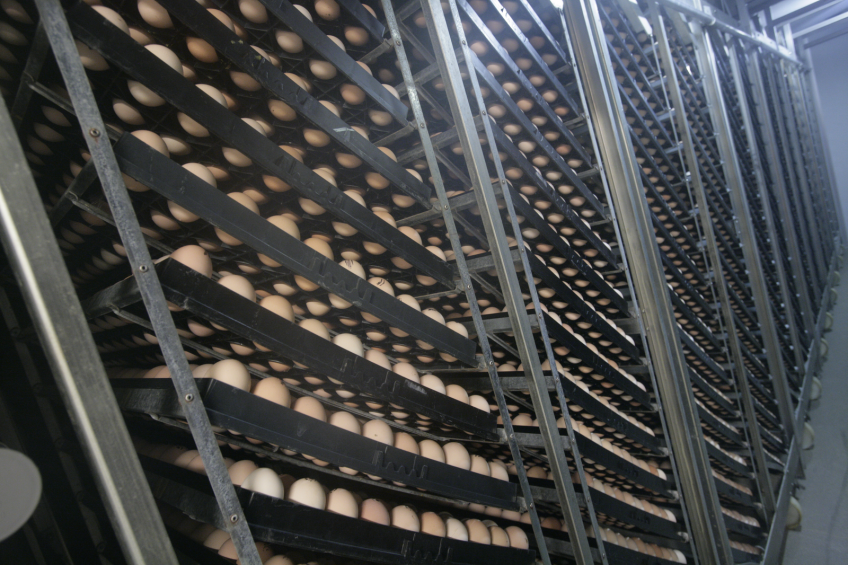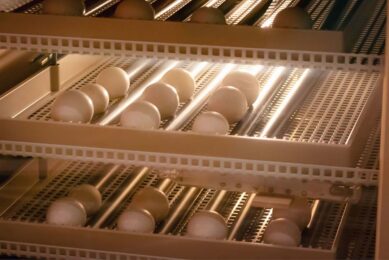Critical periods during incubation

Photo: Koos Groenewold
Four main aspects of turning hatching eggs have been identified as being integral to the ultimate success of incubation; turning during storage, critical periods for turning during incubation, turning frequency during incubation and turning angle during incubation. This second article in a series will focus on critical periods for turning during incubation.
It has become very clear that the most critical period for turning broiler hatching eggs was during the first week of incubation. Interruption of turning during very early incubation has affected the number of dead embryos not only at that time in early incubation but also throughout subsequent incubation, as demonstrated by the data shown in Figure 1.
Figure 1 – Effect of turning during different days of incubation on percentage fertile hatchability, early dead embryos (E0-E6), and late dead embryos (E18-E21 + pipped) (Adapted from Elibol and Brake, 2004).

Good eggs less sensitive
Furthermore, lack of turning during early incubation appeared to produce worse results for older flocks than for younger flocks as indicated in Figure 2. This can be attributed to differences in albumen quality that has been related to flock age. Good quality hatching eggs (younger flock eggs) have been shown to be less sensitive to decreased turning than poor quality hatching eggs, for example older flock eggs.
Figure 2 – Effect of turning during first 7 days of incubation on percentage fertile hatchability, early dead embryos (E0-E6), and late dead embryos (E18-E21 + pipped) of broiler hatching eggs produced by 29 and 48-wk-old flocks (Adapted from Elibol and Brake, 2004).

The first 8 days of incubation was studied more intensely by dividing it into 2 d increments (Figure 3). An absence of turning during E0-E2 caused the greatest decline in fertile hatchability. Also observed – differential effects as an absence of turning during E0-E2 days that primarily increased early deads while an absence of turning from E3-E8 primarily increased late deads even though fertile hatchability was similar in both groups (Figure 3).
Figure 3 – Effect of an absence of turning during 2 day increments during the first 8 days of incubation on percentage fertile hatchability, early dead embryos (E0-E6), and late dead embryos (E18-E21 + pipped). (Adapted from Elibol and Brake, 2004).

Turning not necessary after E15
Although the absence of turning during various periods from E0-E8 of incubation caused a significant decrease in hatchability of fertile eggs, turning was not absolutely necessary after E15 of incubation. Additionally, cessation of turning at E14 -15 may have a beneficial effect on the hatchability of the eggs from older flocks in comparison to the eggs from younger flocks (Table 1) due to improved machine airflow that may reduce variation in egg temperature. In fact, we found a significant interaction between cessation of turning after the second week and machine capacity (size of machine). Hatchability of the eggs from an older flock was increased in the absence of turning during E15-E18 of incubation in a higher egg capacity setter but not in a smaller capacity setter (Table 2), which may reflect airflow issues with certain larger single-stage machines.












